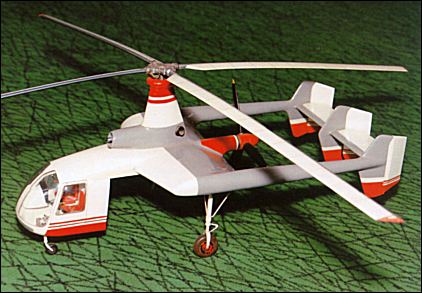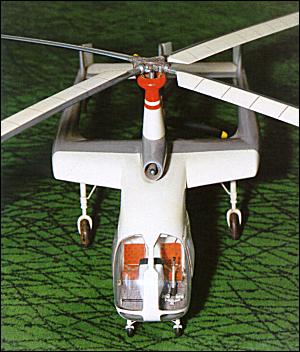Post by Stingray on Jul 11, 2008 19:24:24 GMT -4
Kamov Agricultural Autogyro
1972 - project
--------------------------------------------------------------------------------

www.aviastar.org/helicopters_eng/kamov_autogyro.php
Although the USSR was a world leader by then as far as the scale of agricultural flying is concerned, its agricultural aircraft inventory (the An-2 aeroplane and helicopters) did not have the potential to increase the total serviced area and reduce the cost of the work. Hence in the early '70s the Ministry of Civil Aviation issued an outline specification for the design - on a competitive basis - of a special aircraft capable of carrying 1500...1800kg of chemicals and reducing work costs by 20...25% as compared to the An-2.
A group of enthusiasts from the the OKB staff suggested that N.I.Kamov take part in the competition with an autogyro of the "flying chassis" type similar to the Ka-26 helicopter. The submitted project of an agricultural autogyro powered by a single turboprop engine with a pusher propeller met the specification. The new-generation autogyro was superior to a new STOL aeroplane in manoeuvrability and flight safety at low speeds and in low-level flight. It posed considerably more modest demands to runways. It had no equals among the contenders as far as cost-effectiveness and flight safety were concerned. Alas, the unusual project never got off the drawing board.
--G.Kuznetsov "OKB Kamov - 50 years", 1999

Technical data for Kamov autogyro
Crew: 1, engine: 1 x TVD-10 turboshaft, rated at 691kW, main rotor diameter: 20.0m, fuselage length: 9.6m, height: 4.8m, width: 4.48m, take-off weight: 4130kg, internal payload: 1600kg, max speed: 220km/h, range with 1100kg payload and 30min fuel reserve: 600km
1972 - project
--------------------------------------------------------------------------------

www.aviastar.org/helicopters_eng/kamov_autogyro.php
Although the USSR was a world leader by then as far as the scale of agricultural flying is concerned, its agricultural aircraft inventory (the An-2 aeroplane and helicopters) did not have the potential to increase the total serviced area and reduce the cost of the work. Hence in the early '70s the Ministry of Civil Aviation issued an outline specification for the design - on a competitive basis - of a special aircraft capable of carrying 1500...1800kg of chemicals and reducing work costs by 20...25% as compared to the An-2.
A group of enthusiasts from the the OKB staff suggested that N.I.Kamov take part in the competition with an autogyro of the "flying chassis" type similar to the Ka-26 helicopter. The submitted project of an agricultural autogyro powered by a single turboprop engine with a pusher propeller met the specification. The new-generation autogyro was superior to a new STOL aeroplane in manoeuvrability and flight safety at low speeds and in low-level flight. It posed considerably more modest demands to runways. It had no equals among the contenders as far as cost-effectiveness and flight safety were concerned. Alas, the unusual project never got off the drawing board.
--G.Kuznetsov "OKB Kamov - 50 years", 1999

Technical data for Kamov autogyro
Crew: 1, engine: 1 x TVD-10 turboshaft, rated at 691kW, main rotor diameter: 20.0m, fuselage length: 9.6m, height: 4.8m, width: 4.48m, take-off weight: 4130kg, internal payload: 1600kg, max speed: 220km/h, range with 1100kg payload and 30min fuel reserve: 600km





